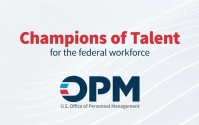The Panama Portfolio: Why the Canal's Monopoly is Over
For over a century, Panama has been the closest thing the global economy has to a utility stock. Stable, essential, and, frankly, a bit boring. Its primary asset, the Canal, operates as a de facto monopoly on transoceanic shipping in the Americas—a geographic chokepoint so fundamental that we rarely even question its permanence. You pay the toll, you cross the isthmus. The model is simple and brutally effective.
But a series of disconnected data points, when aggregated, are starting to paint a very different picture. The quiet, predictable hum of the Canal's operations is being drowned out by new signals of competition, complexity, and internal pressure. The utility stock is starting to look more like a speculative asset in a suddenly volatile market. The core assumption of Panama's unassailable position is, for the first time in modern history, being seriously tested. And the primary challenger isn't a new shipping lane in Nicaragua or a melting Arctic passage; it’s a 308-kilometer stretch of railway in Southern Mexico.
A New Tollbooth on the Superhighway
The project is called the Tehuantepec Interoceanic Corridor, or CIIT. And if you’re in logistics, you should have that acronym memorized. Since 2019, the Mexican government has poured massive public investment (around $4 billion) into reviving a century-old dream: a rail line connecting its Pacific and Caribbean ports. It’s attracted over a billion in private funding—or, to be more precise, $1 billion in projected private funding. The entire operation, from railway security to the construction of industrial parks, is administered by the Mexican navy, signaling an unusually high level of state priority.
This isn't just a proposal. It’s operational. In April, the CIIT made its first major delivery, transporting 900 U.S.-bound Hyundai vehicles from Salina Cruz to Coatzacoalcos. The key takeaway from the initial report: the operation "bested the Panama Canal on time and cost."
Now, we need to apply some skepticism here. This is a single data point, likely a carefully selected proof-of-concept for a press release. Was the cargo type optimal for rail? What were the waiting times at the Canal that week? Without a full comparative data set, declaring the Canal obsolete is premature. But that misses the point. The Panama Canal has functioned like the only tollbooth on a trans-American superhighway. Mexico hasn’t just opened a new EZ-Pass lane; it has built an entirely separate, parallel highway. The existence of a viable alternative, even a nascent one, fundamentally alters the strategic calculation, a development showing how Mexico’s Answer to the Panama Canal Finally Takes Shape. It introduces competition, which in turn threatens pricing power.
What happens to the Canal’s toll structure when a major shipping line can credibly threaten to route its high-value cargo through Mexico instead? How does that change the long-term revenue projections for an asset that underpins Panama’s entire economy? These are the questions that should be keeping Panamanian officials awake at night.

I've analyzed countless infrastructure projects, and the CIIT stands out. It's not just the scale, but the integration with planned "development poles"—industrial parks designed for everything from semiconductors to automotives. This isn't just a canal alternative; it's a bid to create an entire manufacturing and logistics ecosystem. The project’s backers aren't just trying to shave a few days off a shipping route; they're trying to vertically integrate a portion of the North American supply chain.
Beyond the Waterway
If the Canal's dominance is no longer a given, then we have to re-evaluate the rest of the Panama "portfolio." What else does the country have? The data presents a complex, almost contradictory, identity. On one hand, you have the hallmarks of a stable, modernizing nation. It's set to host the IUCN World Protected and Conserved Areas Congress in 2027, a savvy move to brand itself as a global leader in sustainability—a powerful narrative in an era of ESG-focused investment. Its national soccer team is ranked 29th by FIFA, a respectable position that speaks to a degree of national cohesion and soft power on the world stage.
But look closer, and the picture gets messy. The same isthmus that serves as a conduit for global commerce is also a bottleneck for human migration. The story of Jharana Chhetri, a Nepali woman who spent months in a Panamanian migrant-reception center after a two-year journey to the U.S., is a stark reminder of the immense social pressures the country is absorbing. You can almost feel the humid evening air as she says her goodbyes, a single, poignant scene playing out against the backdrop of global forces far beyond her control.
This isn't an externality; it’s a critical variable. A nation managing a constant flow of desperate people through the Darién Gap faces profound stability challenges that don't show up in a shipping company's cost-benefit analysis. While the world sees a canal, Panama itself is dealing with a humanitarian crisis. How does a government balance the pristine image required for a global environmental summit with the grim reality of being a transit zone for the displaced? And how much political and financial capital is being diverted to manage this crisis that could otherwise be spent on making the Canal more competitive?
The raw data flow on "Panama" is filled with this kind of noise. One minute you're reading about World Cup qualifiers, the next you're parsing a headline like Panama City teen arrested for reckless driving crash (a classic data-cleaning problem). The challenge is to isolate the signal. And the signal is this: the monolithic, simplified identity of "Panama the Canal" is shattering. It is being replaced by the far more complex reality of Panama the nation—a country with strengths in diplomacy and environmentalism, but also one grappling with profound social burdens, all while facing the first existential economic threat in its modern history.
The End of the Utility Stock
For decades, investors and policymakers could afford to be lazy about Panama. You bought into the country because you were buying into the Canal—a low-risk, high-moat asset with guaranteed returns. That era is definitively over.
The CIIT in Mexico means that Panama is no longer a monopoly. It is now, at best, a duopoly, and it must start behaving like a competitive enterprise rather than a passive toll collector. The country's success is no longer just about dredging channels and managing locks. It’s about managing a national brand, navigating complex humanitarian issues, and convincing the world that its route—perhaps a "greener," more stable, or more secure one—is worth a premium. The Panama portfolio has become diversified, but with that diversification comes a level of risk and volatility it has never had to manage before. The utility stock has been delisted; in its place is a growth stock with a whole lot more uncertainty.










